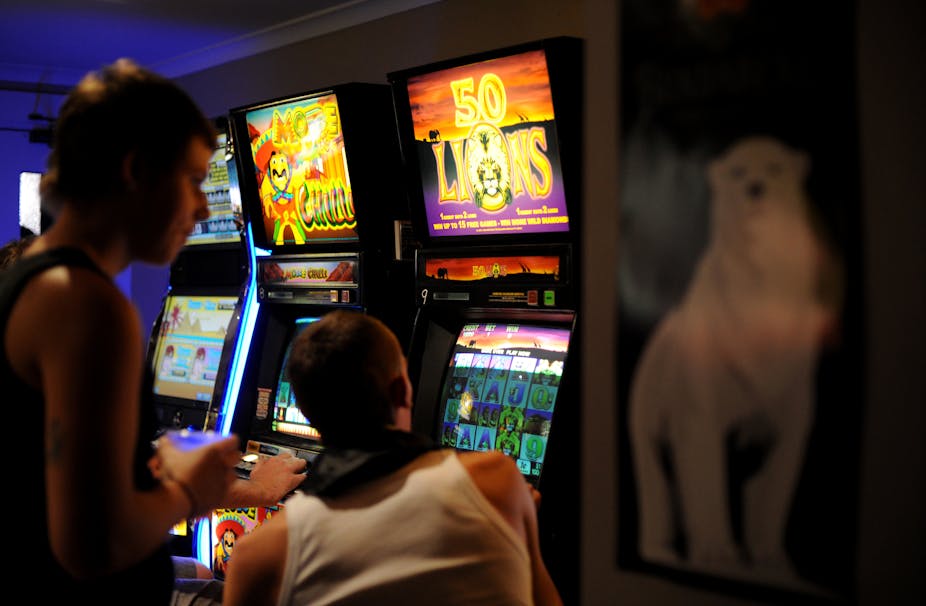The Greens have tabled a bill in the Victorian parliament that would introduce a maximum bet of $1 per spin for the state’s 30,000 poker machines. While the bill is almost certain to fail, the introduction of $1 maximum bets would allow the poker machine industry to truthfully argue it was focused on providing enjoyment and fun to patrons – a claim it can’t, in good faith, make at the moment.
Poker machines in pubs and clubs are supposedly entertainment options for patrons: one of a number of diversions intended to provide harmless amusement. As currently configured, however, they produce significant harm for 30% of regular users. This is highly inconsistent with their supposed purpose.
In Victoria, club and pub poker machines are set to a $5 maximum bet, meaning they can readily accrue $600 average net revenue per hour. In NSW, with maximum bets of $10 per spin, they can make an average $1200 per hour. Naturally, the revenue they make is equivalent to the losses incurred by users – across Australia, club and pub poker machines account for 54%, or $11 billion, of our annual gambling losses of $20.5 billion.
This is a staggering amount of money, especially when we note that machines are generally concentrated in our most disadvantaged suburbs. One of the principal reasons for this is that working-class suburbs are overwhelmingly subject to the colonisation of traditional social spaces (in clubs and pubs) by the poker machine industry.
The last federal attempt to reign in the almost unlimited money-making capacity of poker machines was the introduction of a pre-commitment system to allow gamblers to decide how much they wanted to spend before they started gambling. This – not unreasonable – proposition was met with fierce resistance from the gambling industry, and was ultimately defeated.
However, this push began with independent federal MP Andrew Wilkie’s request for the introduction of a $1 maximum bet, which was subsequently translated by then-prime minister Julia Gillard’s office into an agreement to introduce pre-commitment.
The $1 bet was also proposed by the Productivity Commission and by the federal parliament’s Joint Select Committee into Gambling Reform, which Wilkie chaired. A select committee of the Tasmanian parliament also gave it a positive review, but did not recommend its adoption because of the reform moves then underway at the national level.
The original evidence for $1 bets in an Australian context came from a study by the University of Sydney’s Alex Blaszczynski and colleagues in 2001, and funded by the NSW gambling industry. This report, for the Gaming Industry Operators Group, was a response to suggestions by the NSW regulator to modify poker machine characteristics in order to reduce harm.
However, the Blaszczynski report suggested there would be some positive effects from the $1 maximum bet, and from some other machine modifications. It concluded that these were preliminary results and should be subjected to verification by further research. Subsequent scholarly articles by the same research team suggested that reductions in maximum bets produced a positive harm-minimisation effect without reducing amenity for non-problem gamblers.
We can also learn from the British example, where slot machines are categorised according to their maximum bets and prizes, and permitted in specific venues according to such categorisation. There is currently great concern in Britain about high impact gambling machines in betting shops, and for good reason. Fixed odds betting terminals (FOBTs) allow bets up to £100 with maximum prizes of up to £500.
In 2010-11, these machines accounted for £1.3 billion of the £1.9 billion spent on slot machines outside casinos (69%), despite constituting only about 24% of those machines. FOBTs averaged revenue of more than £40,000 per year compared to the average revenue of no more than £13,000 for machines with maximum bets of no more than £1 or £2, and maximum prizes of between £70 and £500.
However, the UK situation is different. In Australia, club venues are allowed to have hundreds of poker machines in some jurisdictions, and Australian poker machines typically have maximum prizes of $10,000. In the UK, betting shops are restricted to four FOBTs, with prizes as set out above. But what the UK experience demonstrates is the relationship between high bet limits, massive expenditure, and significant gambling harm.
The current $5 maximum bet was introduced into Victoria between 2008 and 2010 without fanfare and without industry opposition. Despite claims to the contrary by the gambling lobby, a $1 maximum bet could be implemented at modest cost to industry if phased in over a period of time, as the Greens bill proposes.
The introduction of a $1 maximum bet for poker machines might not end problem gambling, but it would certainly reduce its harmful effects, since 80% of problem gambling is associated with poker machine use. It is highly likely to reduce the harm experienced by gamblers and limit the uptake of new problem gamblers. After all, chasing huge losses is one of the common early stages in a problem gambling career.

